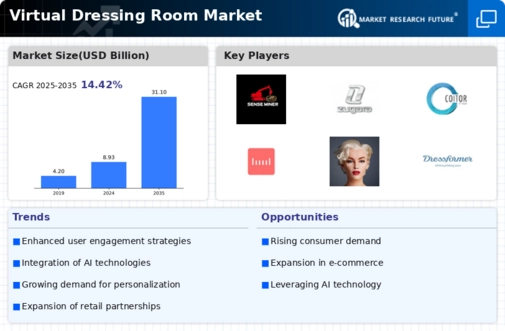Virtual Dressing Room Size
Virtual Dressing Room Market Growth Projections and Opportunities
The Virtual Dressing Room market is experiencing a surge in popularity and growth driven by numerous market forces that mirror the changing dynamics of the retail industry. One such factor is the increasing desire for an improved-customized shopping experience. Technological advancements play a critical role in shaping the virtual dressing room market. The advent of augmented reality (AR) and virtual reality (VR) technologies has significantly enhanced the capabilities of virtual dressing rooms. These developments allow customers to see how different garments will look on them in real-time, thereby making shopping experiences more engaging and realistic. As these advancements continue to evolve, it is expected that the virtual dressing room market will benefit from even more sophisticated and accurate simulations. The rise of e-commerce is yet another significant market factor driving the adoption of virtual dressing rooms. Retailers are looking for ways to replicate the offline try-on experience in a digital setting since internet-based purchasing continues to gain traction. Customer expectations and preferences also shape this sector. Today's consumers, especially younger demographics, view convenience and efficiency as key aspects of their shopping experiences. Such needs are met through the provision of quick access to many options without having to put them on physically at any given time – a major utility advantage of VRDs. This saves not only time but also contributes to a more enjoyable and relaxed shopping experience. Furthermore, the COVID-19 pandemic accelerated the adoption of VDRs due to retailers' quest for innovative solutions aimed at addressing challenges posed by social distancing measures together with lockdowns, among other things. Since physical stores were restricted, virtual fitting rooms bridged the wide gap between physical shops and online shops within minutes. Technology providers working hand-in-hand with fashion retailers are driving growth within the virtual dressing room space through collaborations and partnerships. Retailers are increasingly realizing that incorporating Virtual Dressing Room features onto their internet platforms can help them differentiate themselves and maintain competitiveness. Companies partnering with technology firms enable retailers to take advantage of cutting-edge solutions that will keep them ahead in the ever-evolving online shopping world.











Leave a Comment